How the Shropshire Star came into being 60 years ago today
The space race, The Beatles, World Cup Willie, Twiggy... and a bright new Star was born.
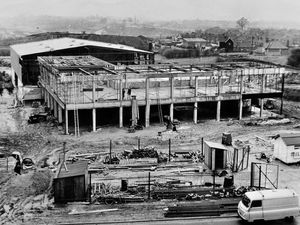
The Sixties was an exciting, dynamic and momentous decade which changed Britain and brought onto the scene a brand new newspaper which was in the vanguard of a publishing revolution.
Launched on October 5, 1964, the Shropshire Star is celebrating a sparkling diamond anniversary, having played its part in transforming a black and white world into one of vibrant colour and cutting-edge printing technology.
As Fleet Street, a place of ages-old hot metal printing, looked on curiously, the Star burst on the scene as only the second new evening newspaper launched in the post-war years – the first was the long-defunct Hereford Evening News – and reset the bar, giving unsurpassed picture and print quality.
It was launched against a backdrop of newspaper closures, so some thought running against the tide was brave, while to others it was plain foolhardy.
Industry experts came to the Star's newly-built home at Ketley to see this revolution in action but it would be many years before Fleet Street, which increasingly became a virtual museum of old ways and mired in restrictive practices which held back the prospects of modernisation, would catch up.
But let's turn back the clock to the early 1960s to capture some of the atmosphere of the times as Britain left the post war era behind – rationing lasted well into the 1950s – and a mood of optimism and creativity took hold.
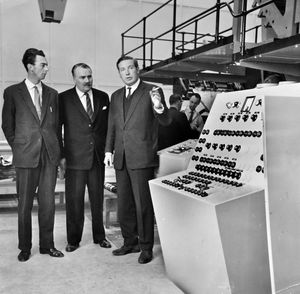
For daily Shropshire news Salopians had their own edition of the Express & Star, published in Wolverhampton. So what changed?
There were practical and commercial reasons for launching a bespoke new newspaper for the Express & Star's Shropshire readers.
The presses at Wolverhampton were working flat out and distribution into the county as its population grew was a problem which could only become more acute.
With Shropshire being largely rural, the Midland News Association, publishers of the Express & Star, saw that it was becoming increasingly difficult to report in detail on all the local news in such a vast swathe.
There was something else too which suggested the time was ripe for Shropshire to have its own evening newspaper. As the new decade dawned, there was talk of one of the most far-reaching changes ever in Shropshire, the creation of a new town in the east of the county. As the move to create Dawley New Town gathered pace, Express & Star bosses grasped the opportunity to ride the wave.
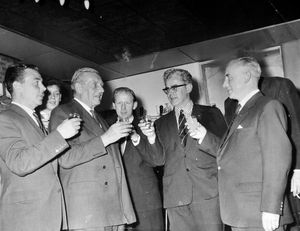
Dawley New Town was designated in January 1963, basically embracing the area of Dawley, Madeley, and Stirchley. It had a target population of 90,000, which would more than double the existing population in the area. Although nobody knew it at the time, it was to prove to be the forerunner of Telford, a much bigger new town which additionally roped in Wellington and Oakengates areas.
In April 1963, hard on the heels of that announcement of the creation of a new town, a site was chosen at Ketley Town Farm as the base of the new newspaper specifically for Shropshire.
The advent of the new newspaper was welcomed in a leader in The Times, no less, and on January 1, 1964, Ted Ireland was appointed founding Shropshire Star editor.
He was 36 and led a young and enthusiastic team on a voyage into new territory.
In barely nine months the building was complete, the developer being K E Millard & Co of Oldbury.
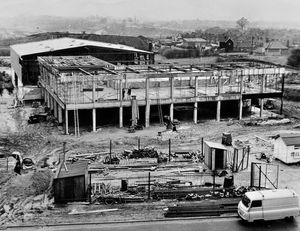
After the first Shropshire Star rolled off the presses the Express & Star's new baby sister quickly established itself as a separate newspaper with its own identity.
It was not just a new newspaper, but a highly influential industry pioneer. It was the first British evening newspaper to be produced by photo-composition and web-offset printing, which was as revolutionary to newspaper production as the introduction of the jet engine was to transport.
It was not a tweaking of an old technique or even a radical change of method – it was a complete replacement of processes from start to finish.
Centuries-old publishing tradition was thrown out of the window.
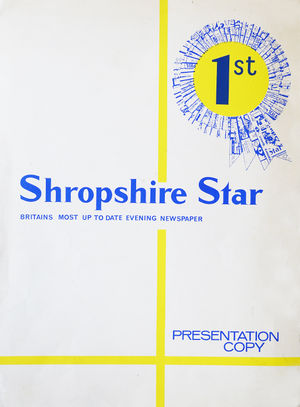
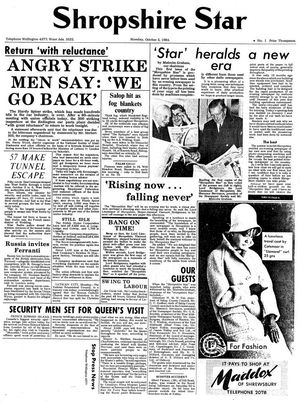
The Star took an immediate lead in the industry as other newspapers became increasingly outdated temples of the old ways.
Inheriting a nightly circulation of around 19,000 from the old Shropshire edition of the Express & Star, the newcomer saw an astonishing sales growth as Salopians embraced the newcomer.
Sadly founder editor Ted Ireland was not to live to see the Star's success story unfold down the decades, as tragically he died of cancer in 1972.
Sixty years on, today's Star inhabits a transformed media landscape in which much has changed since those young pioneers set out on their groundbreaking adventure.
But one thing has never changed – our commitment proudly to serve the county as a trusted news outlet at the heart of the community.




